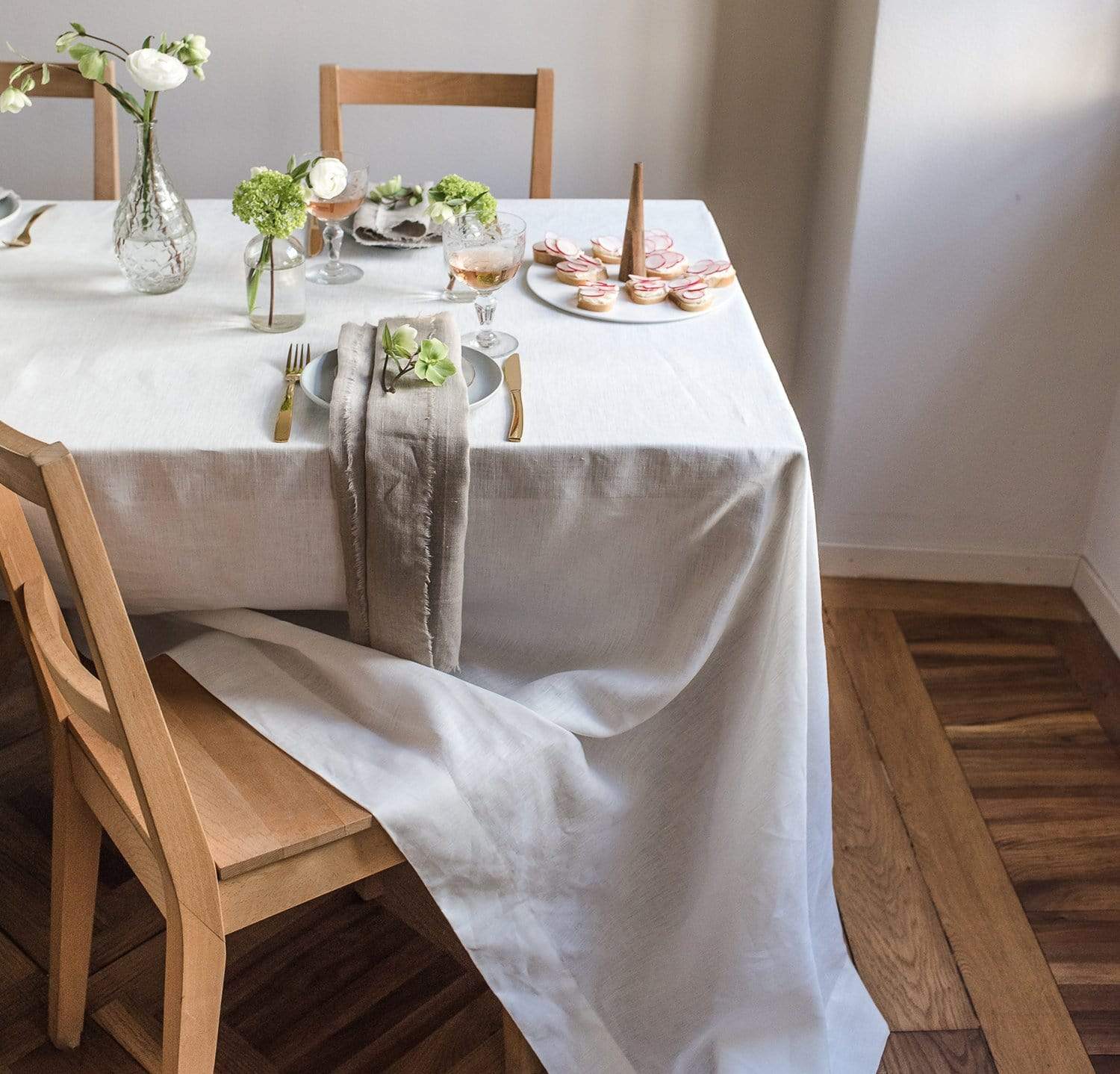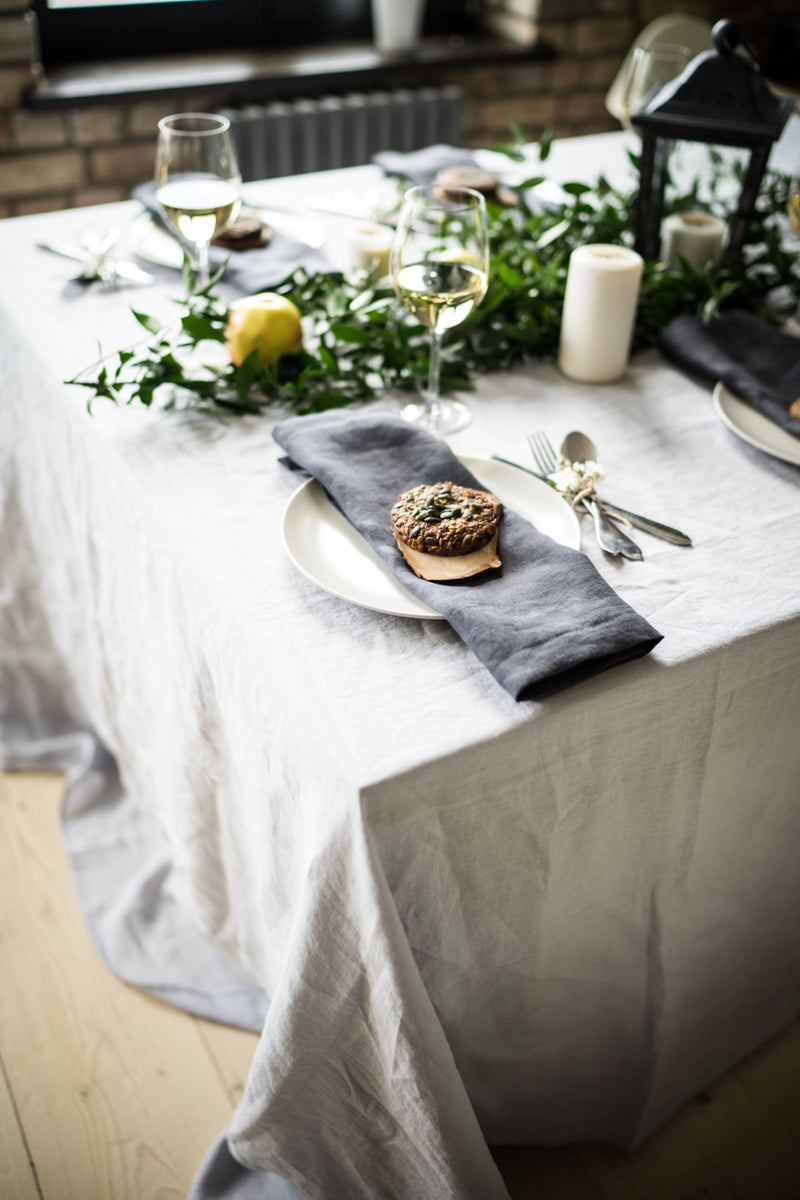Linen Material Innovations: Checking Out Modern Trends and Creative Applications in Style and Fabric Industry
From lasting production approaches to cutting-edge weaving technologies, the development of bed linen is improving the landscape of the fabric market. As we dig right into the worlds of imaginative layout applications and the introduction of linen blends and hybrid materials, a brand-new chapter unfolds in which linen's role in future textile technologies takes center stage.
Lasting Practices in Linen Production
Sustainable techniques in bed linen manufacturing have come to be increasingly crucial in the textile market's efforts to minimize environmental impact and promote ethical sourcing approaches. Linen, a natural fiber obtained from the flax plant, supplies a range of advantages such as biodegradability, breathability, and sturdiness. However, typical methods of linen manufacturing can involve significant water consumption, pesticide usage, and energy-intensive procedures.
To deal with these challenges, several fabric producers are adopting lasting methods throughout the linen manufacturing process. This consists of sourcing flax from organic farms that stay clear of dangerous pesticides and chemicals, executing water-efficient retting strategies to essence fibers from the flax stalks, and using green dyes and surfaces. Furthermore, some firms are investing in sustainable energy sources to power their production centers and decreasing waste via recycling and upcycling campaigns.
Technical Developments in Linen Weaving
With the expanding focus on sustainable techniques in linen manufacturing, the fabric market is currently observing a rise in technological improvements specifically focused on transforming the art of linen weaving. These developments are reshaping the way bed linen materials are generated, offering boosted performance, quality, and imagination in weaving techniques.
Among the vital technical advancements in linen weaving is the assimilation of computerized looms. These innovative looms are equipped with software that permits detailed and complex layouts to be woven with precision. By digitizing the weaving process, suppliers can accomplish better consistency and precision in their linen fabrics.
Additionally, advancements in thread spinning innovation have actually made it possible for the manufacturing of finer and more sturdy bed linen yarns - table cloths. This leads to softer and smoother linen textiles that preserve their high quality even after several usages and laundries
In addition, the development of green dyeing processes and coatings for bed linen fabrics is gaining grip. These lasting practices not only lower the ecological influence but additionally provide to the increasing consumer need for ethically created textiles.
Creative Layout Applications for Bed Linen
Ingenious imaginative methods are increasingly shaping the creative style applications for linen in the fabric industry. Linen's natural visual appeal and capability to blend with various other textiles make it a favored selection for creating unique garments and accessories that cater to the ecologically aware customer.
Furthermore, designers are explore bed linen in home design, utilizing its breathable and resilient nature to craft stylish home furnishings such as curtains, bed linens, and upholstery. The appearance and drape of bed linen bring a sense of class and convenience to interior areas, adding a touch of elegance to modern-day homes.

Bed Linen Blends and Crossbreed Fabrics

Crossbreed textiles, on the other hand, take the idea of blending an action further by integrating extra elements such as metal threads, recycled materials, or conductive fibers. These innovative fabrics not just increase the layout possibilities but also present functional aspects like conductivity, antimicrobial residential properties, or boosted longevity. Crossbreed materials are significantly being utilized in various markets, including fashion, indoor design, and technological fabrics, where the need for multifunctional materials gets on the rise.
Bed linen's Function in Future Fabric Innovations

In the realm of future fabric advancements, bed linen is anticipated to be a principal in the growth of innovative practical materials. Designers address and scientists are exploring means to improve bed linen's intrinsic top qualities with technical innovations, such as integrating wise textiles, nanotechnology, and efficiency finishes. These innovations aim to boost linen's performance attributes, making it ideal for a wider variety of applications, from activewear to safety garments.
Additionally, the combination of linen with other all-natural or synthetic fibers opens endless possibilities for producing unique textiles with special buildings and capabilities. By leveraging linen's features and exploring ingenious blends, the textile sector is positioned to present exciting advancements that satisfy advancing customer requirements and sustainability demands.
Conclusion
In verdict, the expedition of lasting methods, technical improvements, imaginative style applications, linen blends, and its duty in future fabric advancements highlight the continuous advancement of bed linen fabric in the modern layout and textile sector. With a concentrate on development and imagination, the convenience and environmentally friendly nature of bed linen make it an important material for makers and designers alike, paving the means for more developments and advancements in the field of fabrics.
As we dig right into the worlds of innovative style applications and the appearance of linen blends and hybrid materials, a brand-new chapter unravels in which linen's role in future fabric technologies takes facility stage.
Exploring the blend of bed linen with other fabrics has led to the appearance of cutting-edge blends and hybrid fabrics in the modern fabric market. Bed linen blends offer an unique combination of the attributes of bed linen with those of other fibers, resulting in textiles that have enhanced homes such as raised durability, enhanced draping, and minimized wrinkling.The evolution learn the facts here now of linen blends and crossbreed fabrics has set the stage for Linen to play a critical function in driving future fabric developments.In the world of future textile developments, bed linen is anticipated to be a vital player in the development of advanced practical materials.